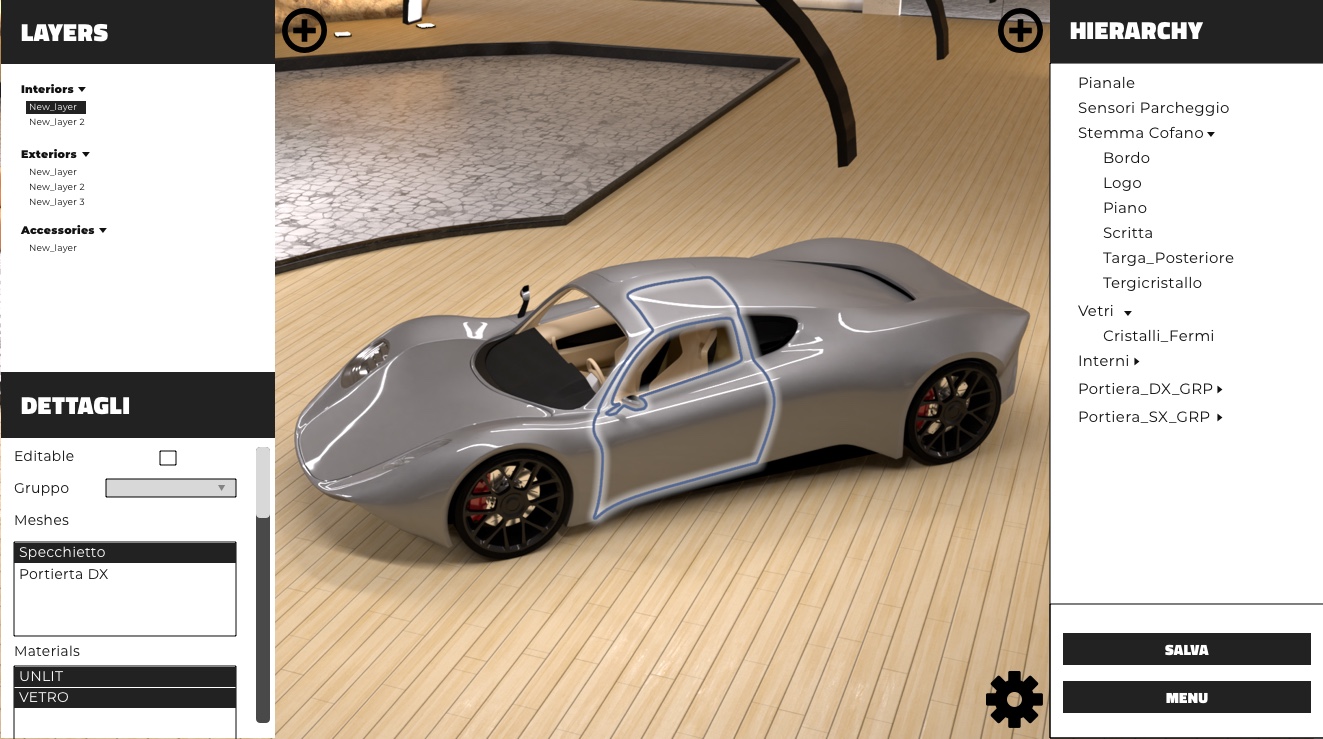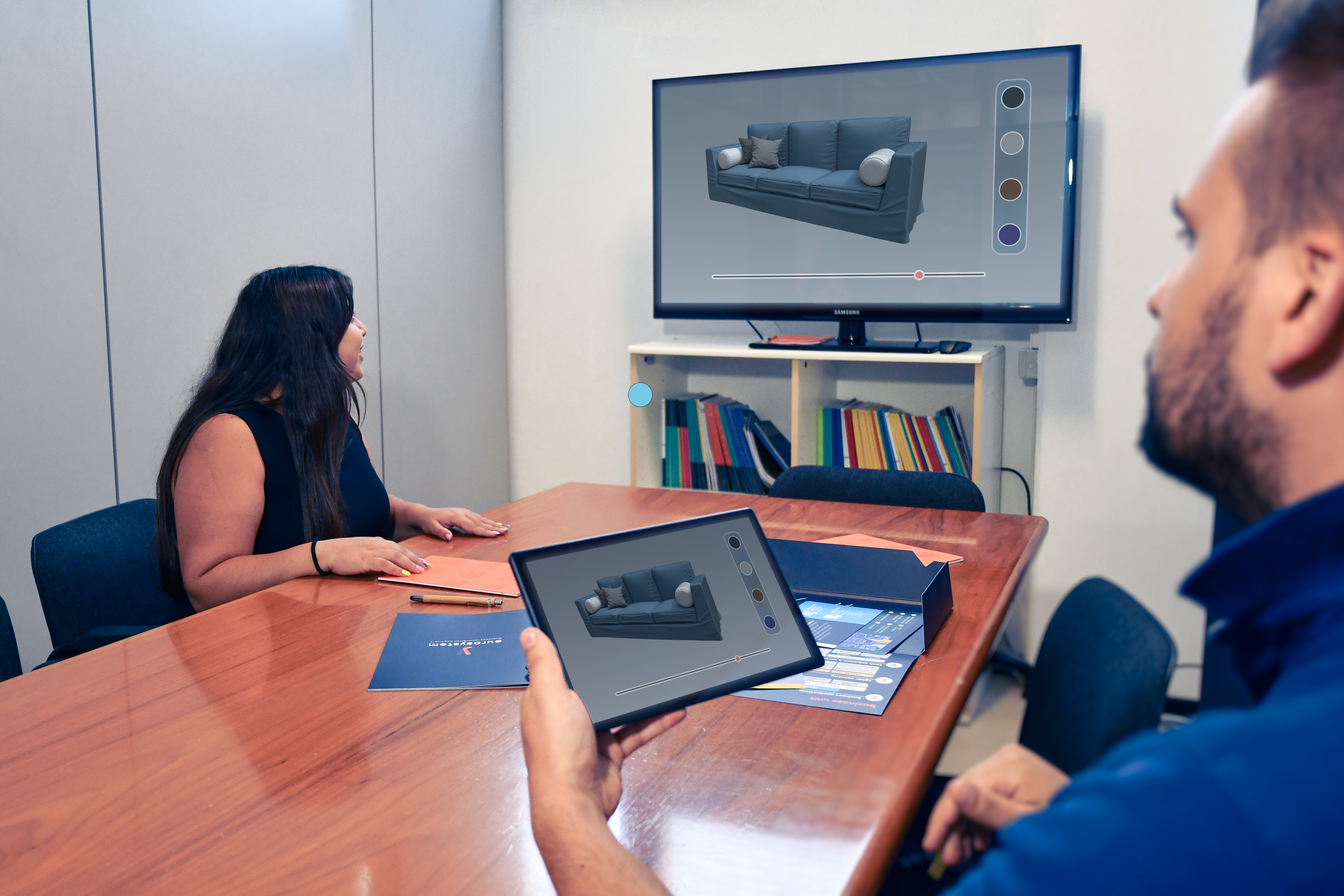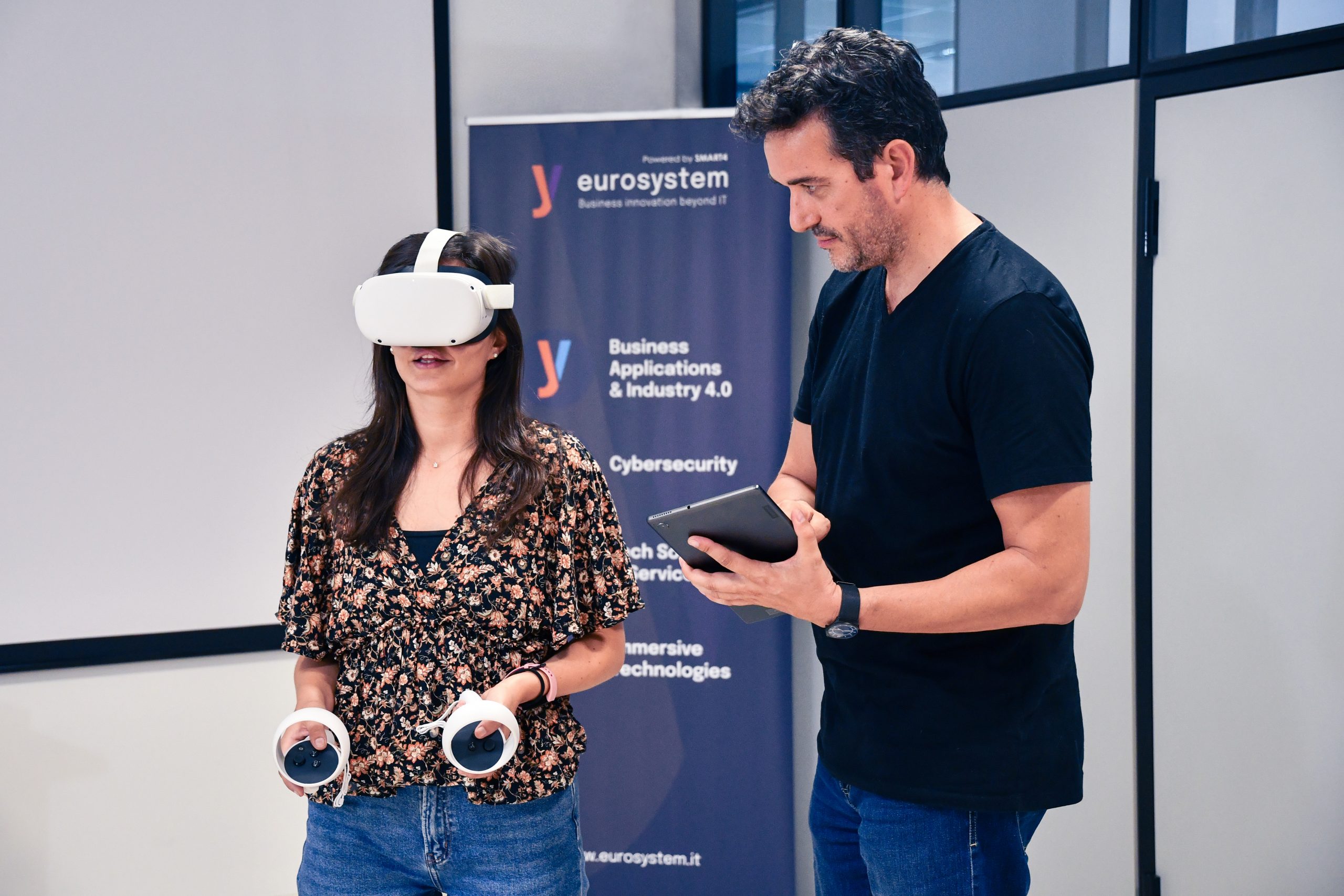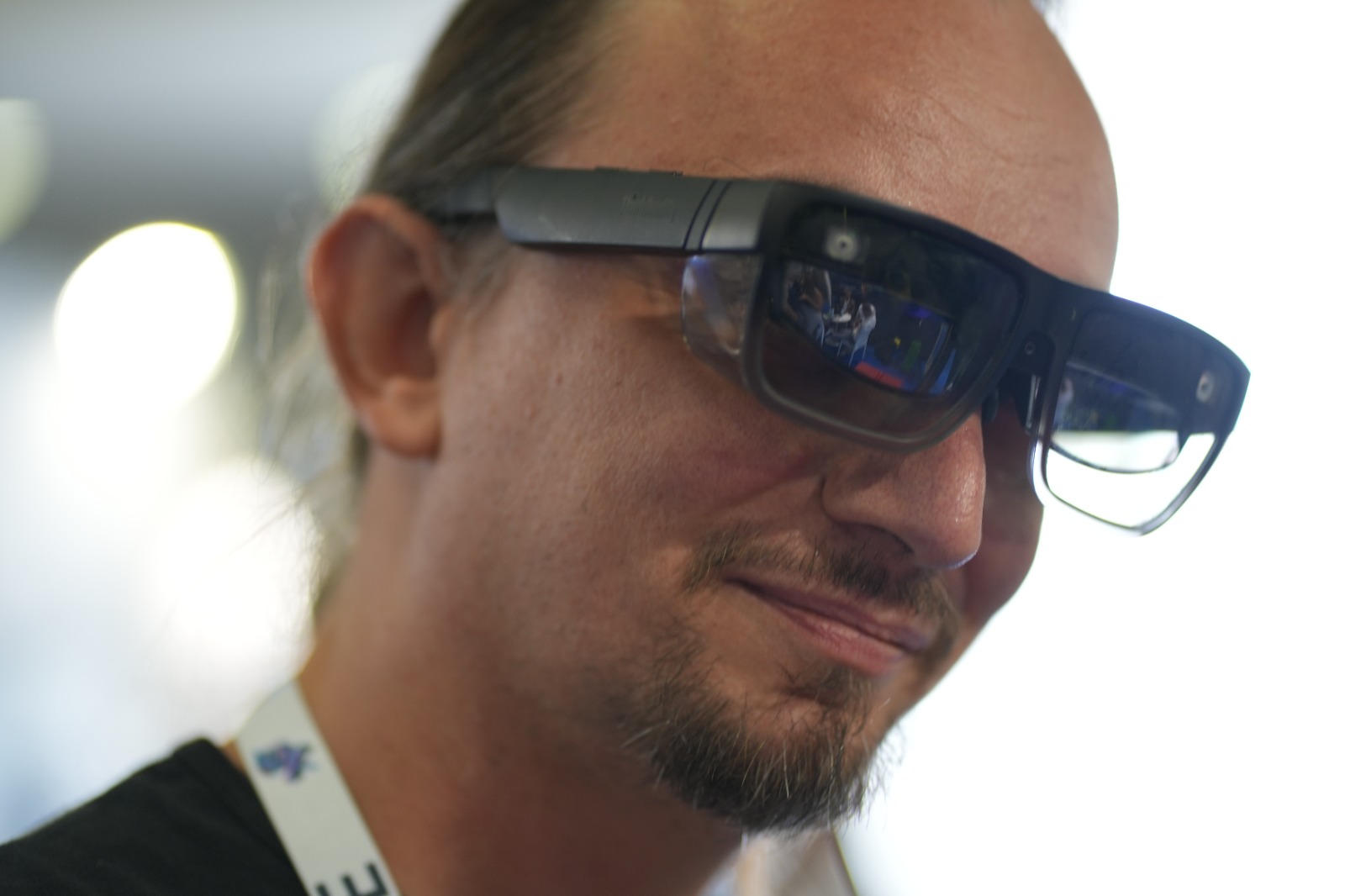
Radio Veneto24: “An original format with content different from other Italian radio offering”
Featured on the italian radio aggregator FM-World, Veneto24 represents a local all-news radio format of great interest. To learn more, we interviewed the station manager of Veneto24, Costantino da Tos.
Costantino da Tos
Station Manager of Radio Veneto24, he has a long and proven experience in the radio and television media sector. He conducted the design of Radio Veneto24 and oversees its implementation and development.
The Interview
Marco Hugo Barsotti (FM-World): Let’s start with a few words about you and the history of this station.
Costantino da Tos: Veneto24 was born from an idea, in a way, of many radio consultants: the lack of an all-news format, even at a local level in Italy. It has always been talked about, but in the end, the problem has always been being able to achieve it. Personally, two years ago, I met Giuseppe Bergantin, who is a print publisher. A free press with an enormous capillary distribution in Veneto. He brought a passion for radio, but above all, thirty years of concrete experience with journalists, information, local reality, and capillary distribution.
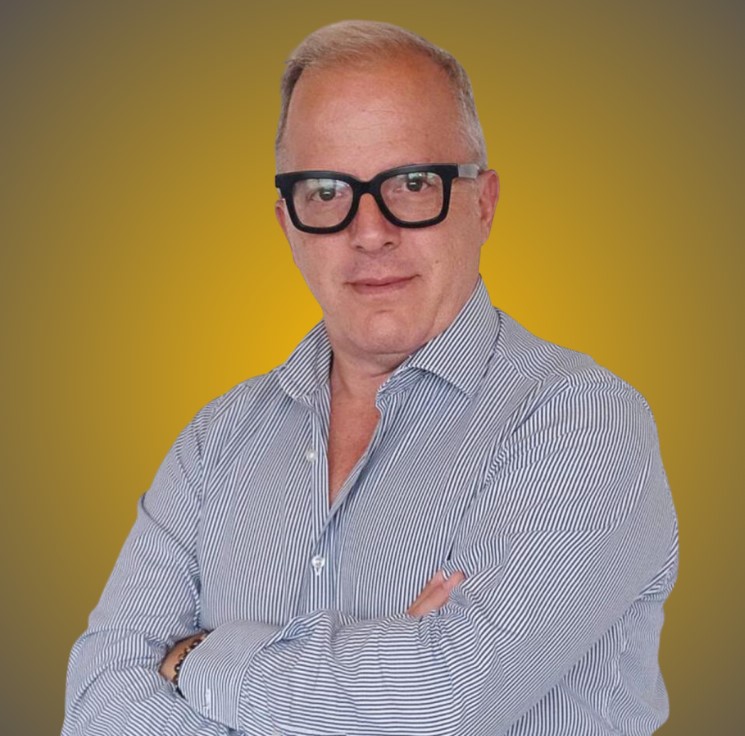
Print Splitting
Furthermore, he had borrowed the concept of splitting from local radio. He has a huge number of editions that, in a capillary way, much like radio splits, cover the Veneto territory. So there were many points in common. These points in common had as a common denominator the fact of working with journalists, which is difficult for radio broadcasters, as we were not used to it. We had dealt with the territory in a capillary way and had a focus on information. Putting these things together, the Veneto24 project was born.
FM-World: For those who don’t know… the publication is called La Piazza?
C.D.T.: The Free Press is called La Piazza, and that’s the split one. They have about thirty editions for Veneto, and this is the interesting thing. So it’s even more than at the municipal level, it’s at the provincial level.
FM-World: Perhaps more, in Veneto there are only seven provinces, if I’m not mistaken…
C.D.T.: Indeed, the editions are capillary and reach the level of sub-provincial subsets.
FM-World: So he has journalistic experience, print media, and perhaps advertising. Yours, on the other hand, is more radio-oriented?
C.D.T.: Yes, the publisher’s experience is journalistic and in print media. In reality, it started thirty years ago with a first experience as a radio publisher. A small local station that he later sold, but which remained a suspended desire in a way.
My experience, on the other hand, comes from local radio stations since I was 18 years old, so it’s been 35-40 years now. I continued as the director of Radio Venezia, then I joined SpheraHolding, the holding company of Company, Radio 80, Radio Padova, Easy Network as CMO, then director of Radio Padova, Easy Network. After my collaboration with SpheraHolding ended, I dedicated myself to radio consulting. I am a consultant for LagoUno, Radio Nostalgia, and Radio NumberOne, a series of stations for a Swiss publisher, and finally for Veneto24. That is my background.
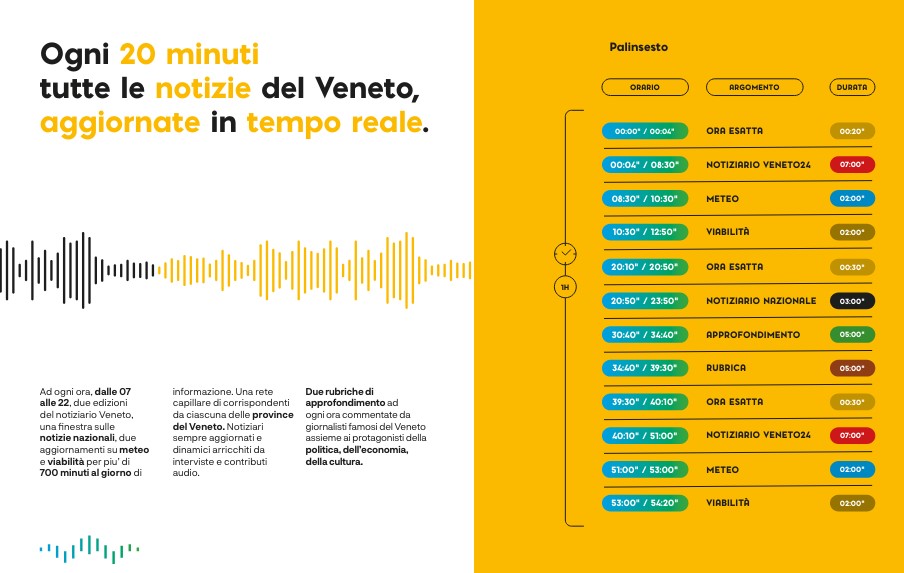
Veneto24 News
FM-World: When did the radio start broadcasting?
C.D.T.: Six months ago. We started in September of last year, 2023. The entire technical structure was designed and set up in June-July of last year. In September, we began broadcasting only on streaming. Two months later, we turned on the first experimental MUX in Veneto. Now there’s a second one; the first one only covered the province of Padua, the Padua area. A second one was turned on in Vicenza, and now we’re waiting for the release of the app concessions.
From AudioOne to Zetta
FM-World: Technology platforms?
C.D.T.: The on-air broadcast, Zetta control room. Schedule and scheduling g-Selector. Advertising schedule Aquira. The NewsRoom we chose is NewsBoss for editing, receiving, writing, and managing the news flow, all shared with the newsroom and collaborators. The OpenRadio platform allows us to distribute podcasts and the AD server for asynchronous content. Apps and web are from AudioOne. All Veneto24 signals are processed with Omnia. Finally, streaming distribution happens through Revma.
Content
FM-World: Let’s talk about content. I get the impression that you were inspired by 1010 Wins, with the story of the 20 minutes….
C.D.T.: Exactly. In a way, if you think about it, for an all-news station, the news is not infinite. The amount of news available over time is not infinite.
Every hour you can consider having 10-12 pieces. So the concept of 20 minutes is not so much a choice made out of thin air, but becomes a necessity in the sense that in those 20 minutes, that number of news stories is told. So it is assumed that the listening is constructed during those 20 minutes. It is also a listening linked to news and public utility news.
So in addition to providing everything that has happened in Veneto, you also have the traffic and weather part. The 20 minutes are statistically the duration of commuting to and from work. So it is calibrated for listening in the car. All the data out there says that somehow the preferred place for radio listening at the moment is the car. So the 20 minutes of TenTen Wins is not an artistic choice, but a real necessity for that type of format.
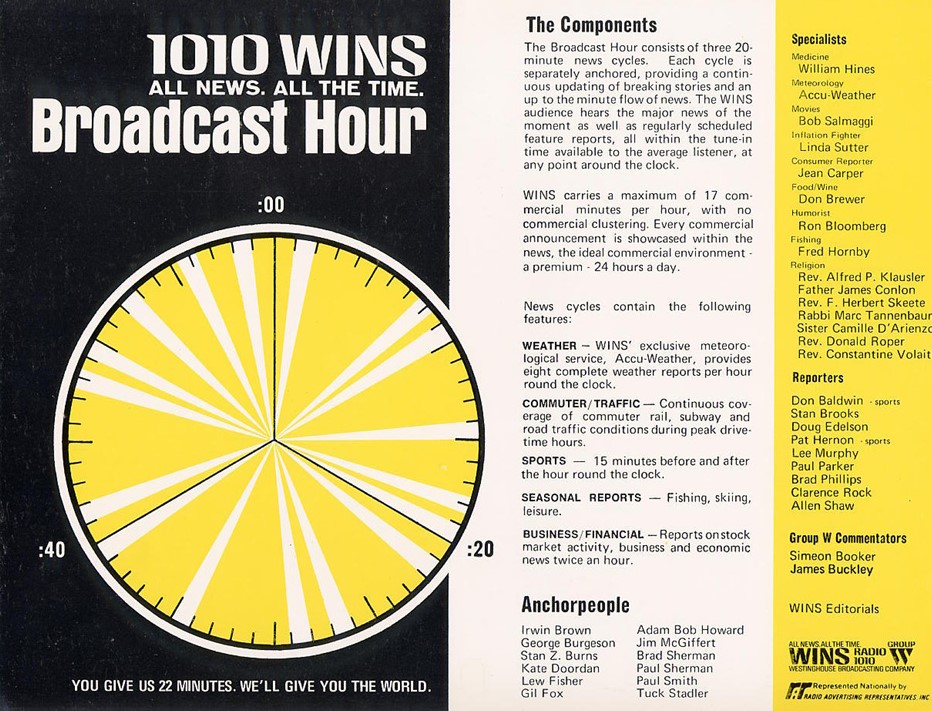
Certainly 1010 Wins has set a precedent, but they probably have 50 years of operation. And in 50 years they have calibrated their product: it’s not an artistic choice, but an element of necessity, of the station’s format.
Delayed Live and Morning Show
FM-World: How much content is produced live and how much is replays of things that have already been broadcast?
C.D.T.: We have 50 news editions, three every hour, for every 20 minutes. Those are made in a delayed fashion, three minutes before broadcast. So all the newscasts go on air, they are closed three minutes before going on air. The in-depth features are updated every day and are done three or four hours before going on air. At the moment there is no morning show: a news morning show with interviews and guests is planned, and it will be the live part of the station, from 7 am to 11 am. However, the content is recorded just before, so it’s as if it were live. It’s recorded up to three minutes before the news bulletin is generated.
FM-World: Why this choice, an operational choice or a fine-tuning one?
C.D.T.: It’s a step-by-step approach strategy, which is also correct in a way because, in reality, those who work at Veneto 24 have never done radio before.
They are journalists who used to write for print media rather than the web, but without radio experience for the most part. So in a way, the language of radio is something different, something new, and the format is equally new, so you need some time to get everything running smoothly.
Veneto 24’s current operations are at 60%, everything is there, but something is still missing, there’s still some
Here’s the continuation:
Veneto 24’s current operations are at 60%, everything is there, but something is still missing, there’s still some fine-tuning to be done, but then again, having been born only six months ago, it’s also justified.

The Newsroom
FM-World: What is the structure? Is there a connection with La Piazza or are you separate?
C.D.T.: In reality, it’s a hybrid system. Three editor journalists are on staff at Veneto 24 and are the people who build the newscasts, write and read the newscasts. Then there are six contributors in the territory, also journalists, these are employed by La Piazza, so they are the journalists who work for La Piazza, who send two or three reports each day to Veneto 24 from their respective provinces.
So for each province there is a La Piazza correspondent who also collaborates with Veneto 24. Together with the contributors there are then ten commentators who deal with the in-depth features, they are all journalists, some on loan from local newspapers, a couple also collaborate with national newspapers. So that’s the team in the end.
There are 27 features in total that Veneto 24 produces, covering politics, culture, society, economics, sports of course, and commentary on current events, always however with a close connection to topics relating to Veneto. We are fortunate because Veneto is a region that generates a lot of news and many points to report on or comment on.
FM Concession
FM-World: I also heard a lot of advertising on air, which is unusual for a web radio.
C.D.T.: No, no, no, it’s not a web radio because in reality the concession is an FM concession. So this one for Veneto 24 is an FM concession, with a frequency in the province of Padua.
FM-World: So you have an active FM frequency?
C.D.T.: We have an active FM frequency.
FM-World: But this wasn’t clear from the website! And I didn’t hear it on air. Not even on the brochure: DAB, online yes, FM nothing.
C.D.T.: Let’s say that our vision at the moment is more towards DAB than FM.
FM-World: Yet it’s hard to emerge in a region like Veneto which has so many strong brands and some are even historic: Radio Padova was born among the first in Italy, if I remember correctly.
C.D.T.: Yes, perhaps the second, but the question of who was first or second is always…
FM-World: ….Radio Parma, Radio Milano International and then maybe Radio Padova, who remembers…. But I always hear that without FM you can’t break through.
A Unique Format to Break Through
C.D.T.: If we had thought of a station with a “classic” format, let’s say similar to another available station’s format, it would have been really difficult. An original format that brings content that is completely different from the current radio offering, that deals with local information with the possibility of also being listened to through podcasts, that offers the possibility for institutions and entities in Veneto to have a voice, should have an easier life even on DAB. In our case, we are certain that it will be the product that will find its listeners.
It’s true that the historic FM publisher carries over an important listener base due to its longevity and also the spread of FM. The publisher who instead approaches DAB will probably have to invest not so much in networks, but in communication and marketing. Or a presence on the territory: which we have.
Think Local, Act Local
FM-World: GR News is the closest thing to you, but at a national level. How do you view the fact of being… the right question might be: what is the right balance between local and national?
C.D.T.: Well, the right balance could be syndication, because if you create a national network that recounts local realities one by one, you risk always doing an injustice to someone. If instead you focus on a very large area like the Veneto region, in a way you can represent it, recount it from all points of view.
National news or information already exists, through television, the web, national radio stations. Perhaps Radio 24… but Radio 24 is more than just an all-news station, it’s a station that recounts the news and expresses opinions, so it’s not an all-news station.
FM-World: I meant GiornaleRadio News, their second network. The first is somehow similar to Radio 24, but the second one I believe is set up like yours.
C.D.T.: You see, the national dimension is almost a commodity, you have it everywhere, the local dimension in my opinion is a strength, it has always been indicated as a strength by those who talk about and recount radio. Local news is a difficult element to deal with, to find, to recount and focusing on this element is another of the things that differentiates us, but on a broad basin that is the Veneto region. Then it’s also true that you can’t ignore national news.
The right dimension for an all-news station could in itself be syndication, now that in a way DAB gives this possibility, perhaps the most correct path would be to have many Veneto 24 radios around Italy, each tied to its own local reality and finding a common point for national news.
No Clusters, We’re Venetian
FM-World: We’ve talked about many topics. Did I forget anything?
C.D.T.: To return to the topic of advertising and how the ads are inserted: even in this case it has a slightly different interpretation from the usual practices of radio formats. We don’t have advertising clusters, but only single spots that function as punctuation between one content element and another, so even in that we tried to differentiate ourselves from other stations.
The other interesting thing about this type of station is the enormous interest that public and private institutions and entities have for a station of this kind. Because if you think about it, often finding a space to recount their own content for institutions and entities is increasingly difficult, in the sense that newspapers now have a limited audience, the web is very scattered, while radio remains an important mass medium, easy to use because it doesn’t need visuals and manages to communicate in a simple way to everyone. (M.H.B. for FM-World)

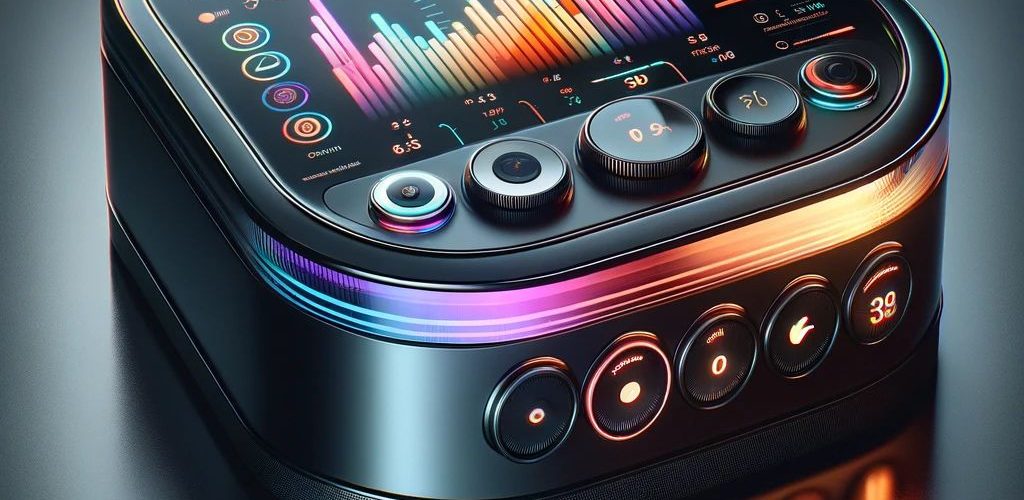
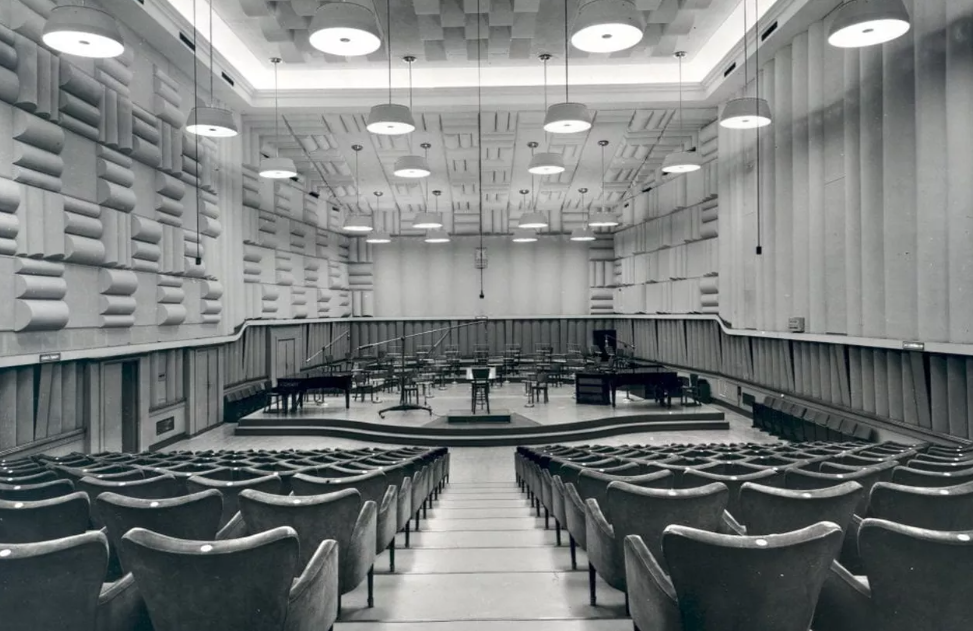
 Console and Screens
Console and Screens
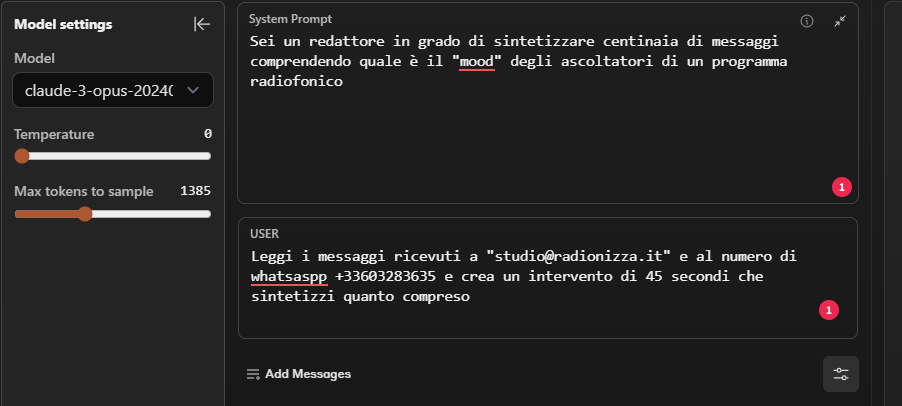
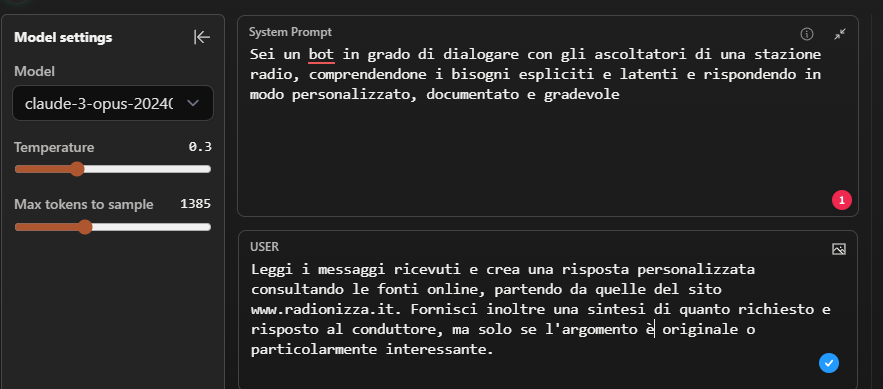
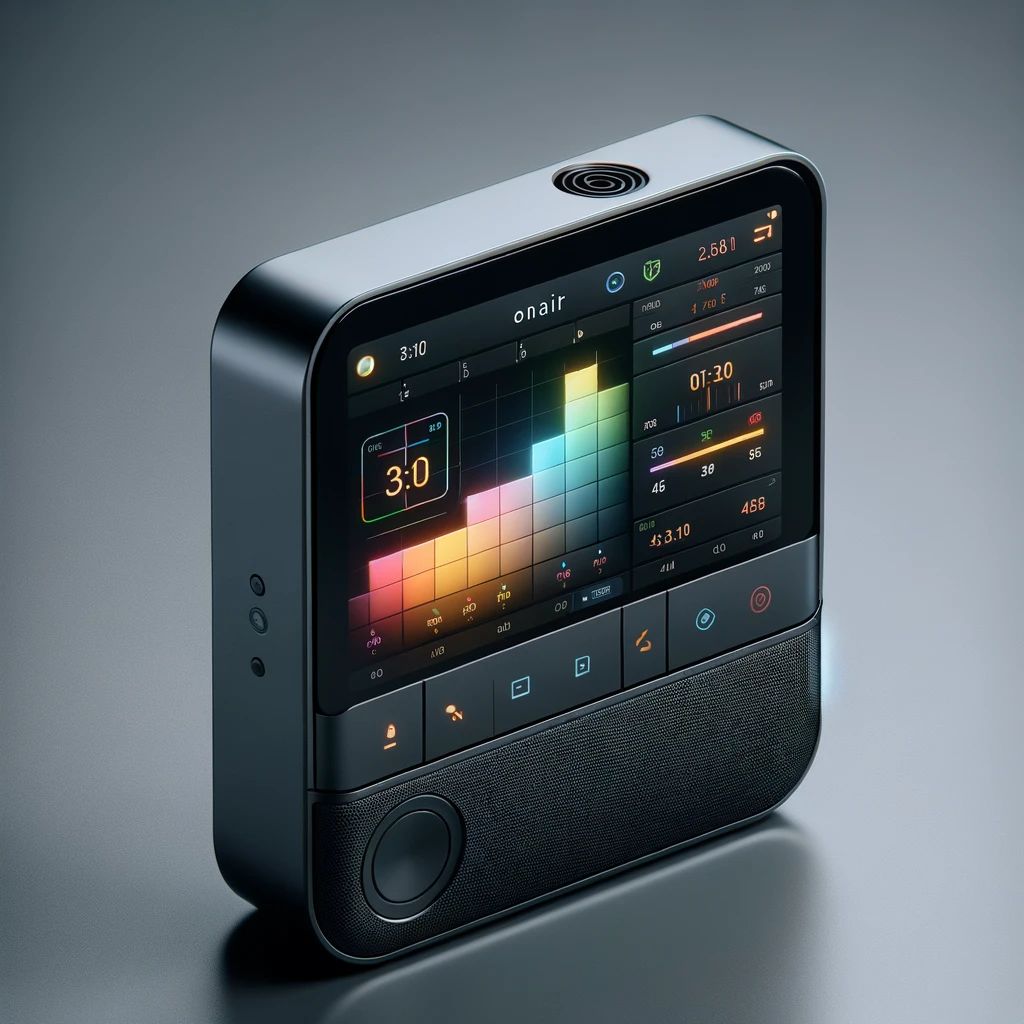
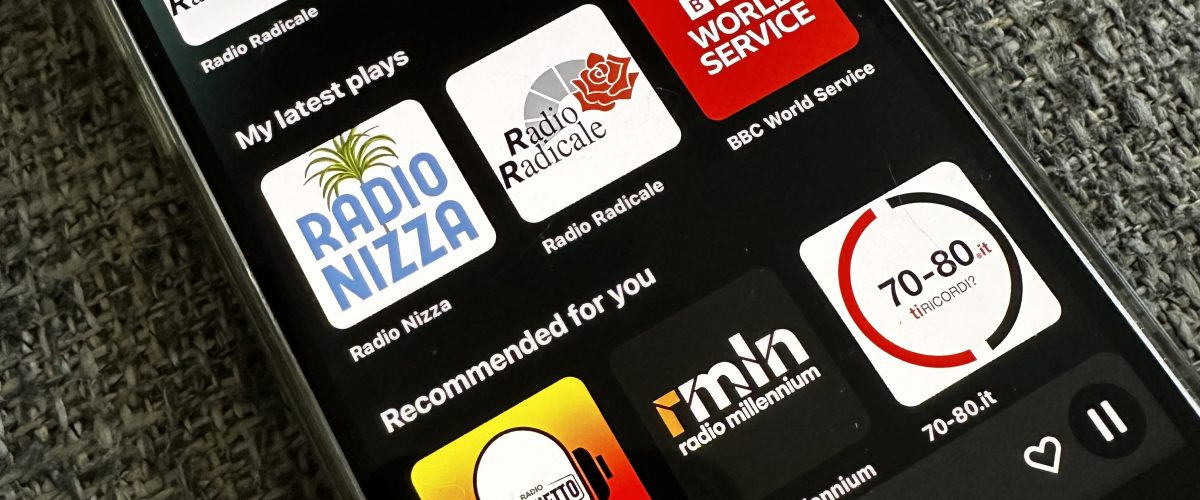
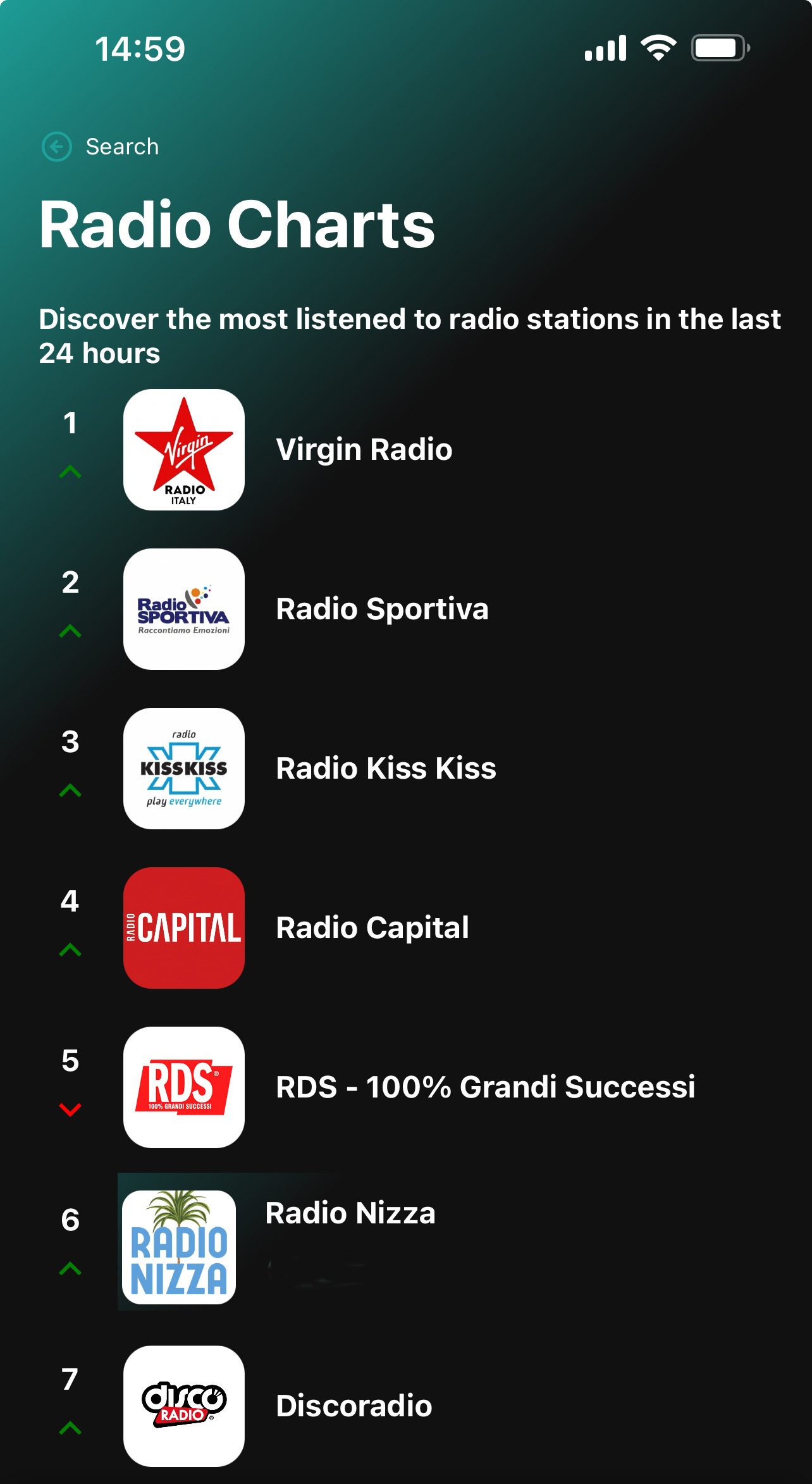 Localization
Localization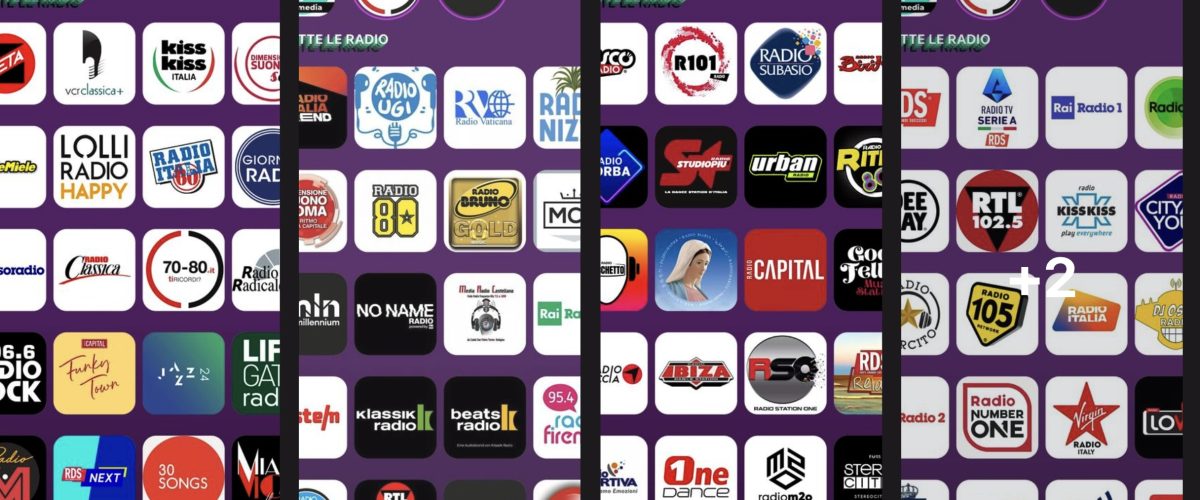
 Among the comments there was even one from the CEO of RAI
Among the comments there was even one from the CEO of RAI
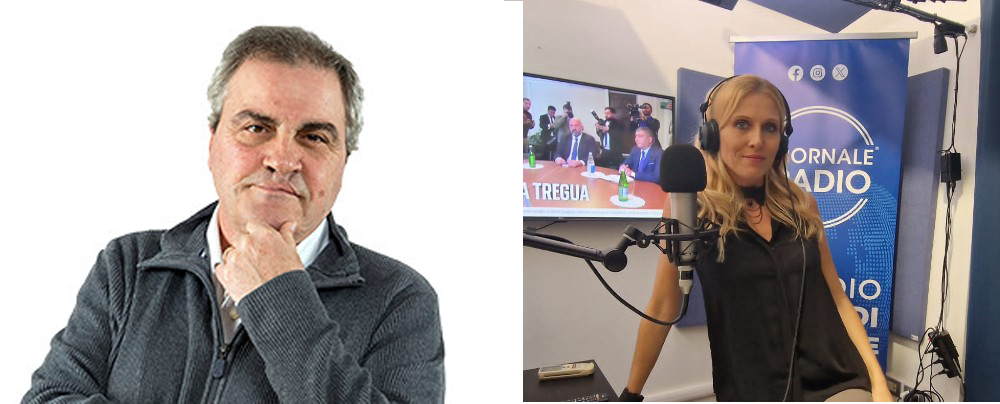
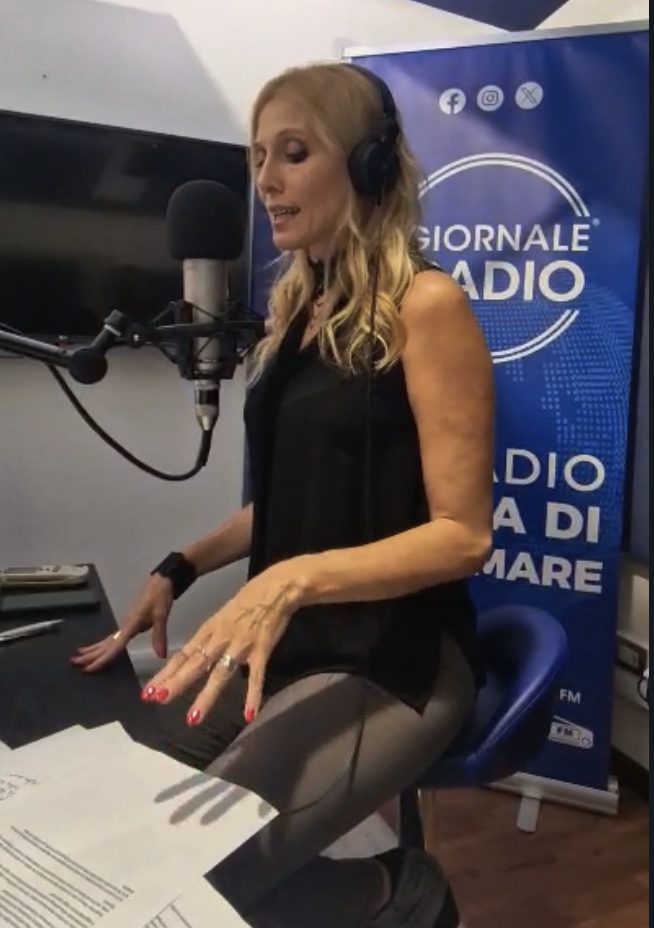
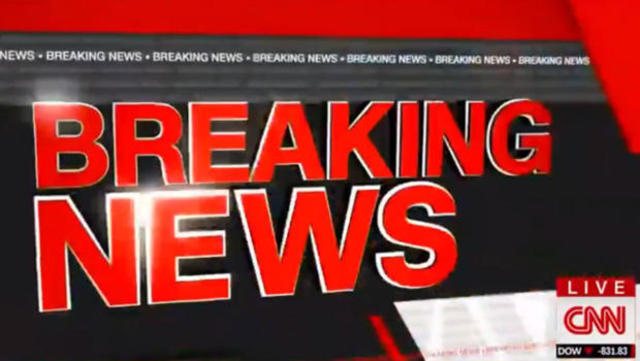
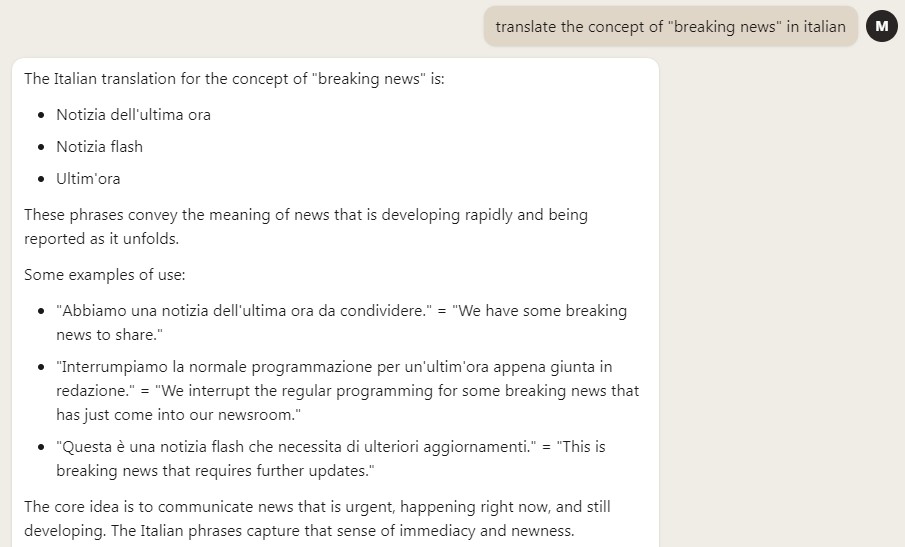
 GR News
GR News
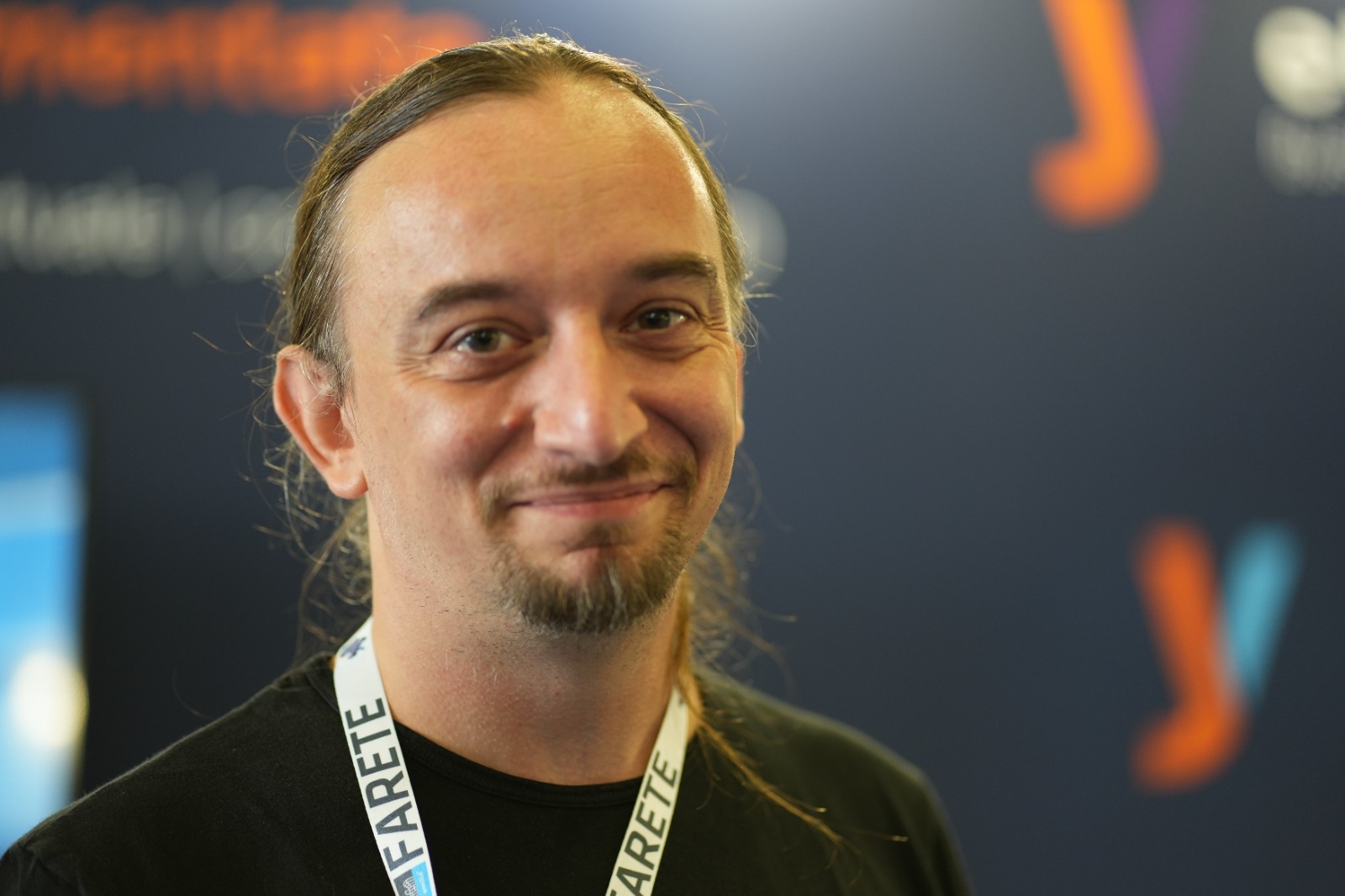 The interview
The interview